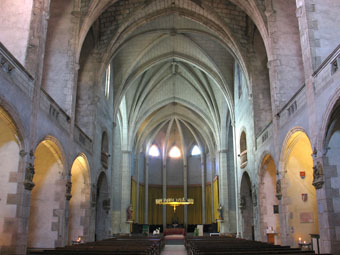The first Canet de Mar inhabitants go back to the Iberian era, towards the second century A.D. Some underground granaries and tools for dry farming have been found from this age.
The following period is strongly attached to the roman occupation. Vine production centres for exportation throughout the Mediterranean were created.
The most important was around the Macia Square; even including an oven for amphora making. Even Santa Florentina Castle may even have roman roots.
There is very little historic information from the III to the XI centuries. Possibly due to the raised Mediterranean attacks and people migrated to the Montnegre area, today Sant Iscle de Vallalta.
Emigration towards the coast starts around XI century. Sant Pere de Romaguera Church is built around this time (now vanished) a bit further from the Castle. There is evidence of a group of people settling into the area around the small church.
As centuries went by, the village grew gradually towards the sea, always trying to avoid the dangers coming from sea (pirates). A good token are the two watchtowers built between mid XV and early XVI centuries.
The most important was situated in Macià Square, next to a big gothic manor house. The second tower was in the one of the extremes of the Lladoners torrent. With the ending of the pirate attacks the parish Church was built with a late gothic style in 1591. At the beginning the front was not graffited nor there was a bell tower, these were posterior modifications.
The demographic increase in that century caused the first streets of Canet to form around the Parish Church.

And we enter the sea commerce era in the XVIII century. People from Canet started making business with America, and fine Catalan laces, printed calicos, vine and liqueur were exported. Many families made a fortune and this contributed to an increase in the economy of Canet. The Americanos appear following the sailor figure. The village was going through an economic crisis so it was the answer to the work problems in Canet. With the returning americanos, Canet was transformed into a show place for beautiful buildings where each family exposed their dreams lived in the Americas in the form of ornamental riches in their homes. This prosperity is still reflected in Vil.la Flora and can Puxan houses and the cemetery, for example.
The coming of the americanos allowed the economic growing through the conversion of old dry farming into vegetable gardens and the introduction of the textile industry.
Is in this moment where Lluis Doménech i Montaner appears (1849-4923) in Canet de Mar.
The architect spent long periods in the Masia Rocosa (Rock House) and the Domènech House. The Ateneu (1885) (old Town Hall) and the Santa Florentina Castle (1907) are fruit of his time in Canet.

Besides Domènech I Montaner, architectonic Art Nouveau was also present through architects like Josep Puig I Cadafalch, with the restaurant of the Sancturary and the Carbonell Sussagna Factory, Eduard Ferrés I Puig, with Vil.la Flora, Alsina Roigh house and the Busquets pantheon, or Pere Domènech I Roura with the Floris House or the Isidre Jover I Cia Factory.
All that splendorous time was halted by the Civil War (1936-1939). The war brought an important economic fall and destroyed some important monuments like the Parish Church of the Sanctuary of the Misericòrdia; luckily they have been re built.


